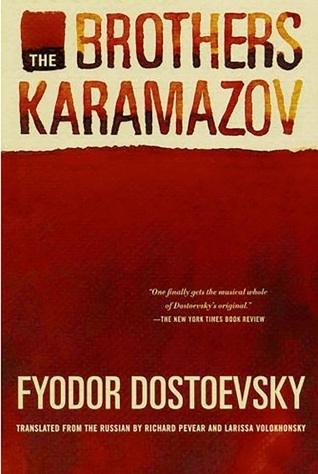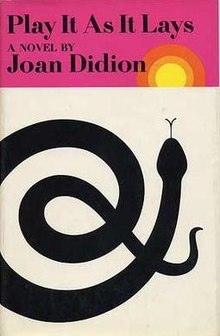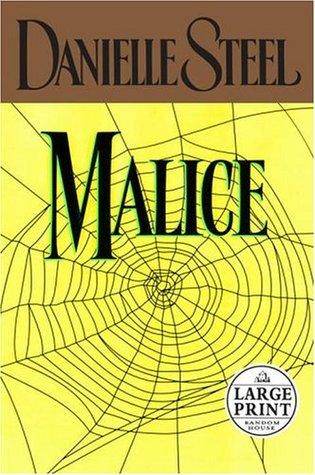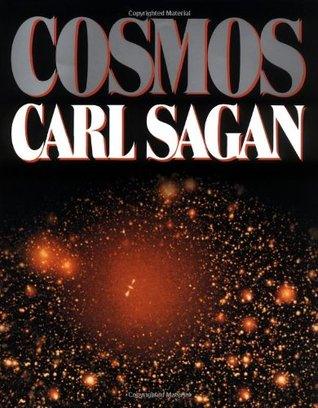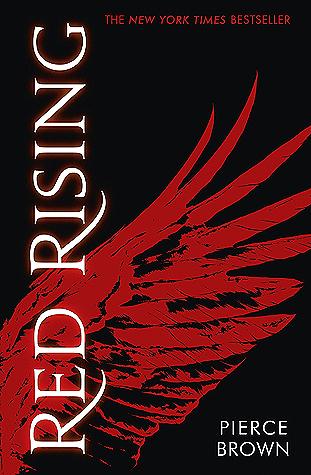The Catcher in the Rye by J.D. Salinger Book Summary
Discover a comprehensive summary and key insights of J.D. Salinger's "The Catcher in the Rye." Dive into our detailed review to explore themes, characters, and the impact of this classic novel. Perfect for students and literature lovers alike!
The Catcher in the Rye Book Summary
J.D. Salinger's The Catcher in the Rye remains one of literature's most controversial and beloved coming-of-age novels, following sixteen-year-old Holden Caulfield's turbulent journey through New York City after being expelled from prep school. This classic American novel explores themes of teenage alienation, identity crisis, and the loss of innocence through Holden's cynical yet vulnerable narrative voice. Our comprehensive analysis delves into the book's enduring impact on readers, examining why this controversial masterpiece continues to resonate with audiences decades after its publication, while providing key insights into Salinger's brilliant character development and social commentary.
Enhance your reading journey with our detailed Cinderella Book Summary, Review & Key Insights. Discover key themes, character analysis, and timeless lessons that bring the classic tale to life.
The Catcher in the Rye by J.D. Salinger - Introduction
You know what really surprised me about The Catcher in the Rye? I had no idea that a book often assigned in school could feel so raw and honest, like you’re eavesdropping on someone’s most private thoughts. I picked it up initially because it’s one of those classic novels everyone talks about but I’d never actually read. I expected something a bit dry or overly dramatic, but instead, I found myself connecting with Holden Caulfield in a way I didn’t expect.
What hit me hardest was how Holden’s struggle with growing up made me rethink the whole idea of adulthood. It’s not just about getting older or making decisions—it’s this messy, confusing process filled with moments where you just want to protect the innocence around you, even if it means feeling lost yourself. It made me realize we all carry that tension inside us, whether we admit it or not.
If you’re someone who’s ever felt out of place, or if you’re navigating those tricky years between high school and whatever comes next, this book will speak to you. It’s perfect for anyone who appreciates Classics, Coming of Age stories, or American Literature, especially if you’re into Young Adult novels that don’t sugarcoat the awkwardness of growing up. Plus, at 277 pages, it’s a manageable read—you could finish it in a few afternoons.
Honestly, whether you’re reading it for school or just because you’re curious about what makes this book a staple, you’ll find something in Holden’s story that sticks with you. Give it a shot—you might be surprised how much it resonates.
What is The Catcher in the Rye About?
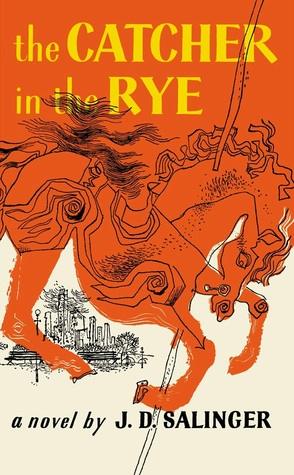
The Catcher in the Rye by J.D. Salinger follows the story of Holden Caulfield, a disenchanted teenager navigating the complexities of adolescence and the challenges of adulthood in post-war America. The book's main message is the struggle against the loss of innocence and the desire to protect it, reflecting the inherent difficulties of growing up. Key concepts include the theme of alienation, the critique of societal phoniness, and the quest for identity, which together illustrate Holden's profound sense of disconnection and longing for genuine human connection.
About Book Author - J.D. Salinger
Ladies and gentlemen, it's my pleasure to introduce J.D. Salinger, the brilliant mind behind the iconic novel, The Catcher in the Rye. What's interesting about J.D. Salinger is that he didn't start out as a literary giant; rather, he was a young man grappling with his own identity, drawing from his experiences in World War II and the complexities of adolescence. This backdrop deeply influenced his writing, allowing him to create characters that resonate with the struggles of youth.
An intriguing personal detail that many may not know is that Salinger was an avid practitioner of Zen Buddhism, which shaped his outlook on life and writing. This spiritual journey enriched his storytelling, evident in works like Franny and Zooey and Nine Stories.
J.D. Salinger is uniquely qualified to explore the themes of alienation and the search for authenticity, as he himself navigated the tumultuous waters of fame and personal introspection. His insights into the human condition continue to captivate readers, making him a true voice of his generation.
More Books To Find
The Catcher in the Rye - Book Overview
It's about a teenager named Holden Caulfield who’s navigating the confusing and often painful transition from adolescence to adulthood. He’s grappling with feelings of alienation and disillusionment, which is something a lot of people can relate to, especially in a world that often feels phony.
Salinger wrote it to capture the raw, messy emotions of youth. It’s not just a coming-of-age story; it’s a deep dive into the struggles of being misunderstood and the fear of growing up. He wanted to give a voice to those feelings that many people experience but rarely articulate.
What makes it different is Holden’s unique perspective. Unlike many protagonists who might find their way through traditional means, Holden resists conformity and grapples with existential questions. It feels more like a conversation with a friend than a structured narrative.
One moment that really stuck with me is when Holden talks about wanting to be the “catcher in the rye.” He imagines standing in a field of rye, catching children before they fall off a cliff, which symbolizes his desire to protect innocence. It’s such a powerful image of wanting to save others from the harsh realities of life, and it really encapsulates his internal struggle.
Key Insights of The Catcher in the Rye
Isolation is a central theme in The Catcher in the Rye. Holden Caulfield, the protagonist, feels disconnected from the world around him, which highlights the struggles of adolescence and the desire for authenticity amid societal phoniness.
Narrative Voice plays a crucial role in the novel. Holden’s unique voice, characterized by colloquial language and cynicism, draws readers into his mind and creates a sense of intimacy. This style effectively conveys his emotional turmoil and confusion.
Loss is another significant insight. The death of Holden's younger brother, Allie, profoundly impacts him, representing the loss of innocence and the challenges of coping with grief. This event shapes Holden's worldview and his desire to protect others from experiencing similar pain.
Desire for Connection is evident throughout the narrative. Despite his isolation, Holden yearns for meaningful relationships, which underscores the complexity of human emotions. His interactions, particularly with characters like Phoebe, reveal his vulnerability and need for understanding.
Finally, The Symbol of the "Catcher" represents Holden's wish to preserve childhood innocence. He fantasizes about being the "catcher in the rye," saving children from falling into the complexities of adulthood. This metaphor encapsulates his internal conflict between the desire to protect innocence and the inevitability of growing up.
These insights collectively illustrate the profound themes of alienation, identity, and the transition from childhood to adulthood in Salinger's work.
Who Should Read This Book
"The Catcher in the Rye" by J.D. Salinger is a must-read for anyone navigating the complexities of adolescence and identity. It resonates with teenagers grappling with feelings of alienation, confusion, and the search for authenticity. Additionally, adults reflecting on their own youth or those interested in classic literature will find value in its themes of innocence and disillusionment. Readers who appreciate deep character exploration and a unique narrative voice will be captivated by Holden Caulfield’s journey, making this book a timeless exploration of the human experience.
Read If You Are
- [a teenager navigating the complexities of identity and belonging]
- [someone interested in classic literature that explores themes of alienation]
- [a reader seeking a deep, introspective look into the mind of a disenchanted youth]
Skip If You Are
- Not interested in coming-of-age stories or character-driven narratives
- Prefer fast-paced plots with clear resolutions
- Dislike introspective or philosophical themes
Important Takeaways from this Book
-
Reflect on Your Values: Take 10 minutes today to write down your core beliefs and values. Understanding what truly matters to you can guide your decisions and help you stay authentic, leading to a more fulfilling life. Consider what makes you feel comfortable and what you want to stand for.
-
Reach Out to a Friend: Call or text a friend you haven’t spoken to in a while. Reconnecting can strengthen your support network and remind you that you’re not alone in your struggles. Ensure you choose someone who understands you and can provide a listening ear.
-
Practice Mindfulness: Spend 5 minutes today focusing on your breath. This simple mindfulness exercise can reduce anxiety and help you stay present, enhancing your mental clarity. Find a quiet space where you won’t be disturbed, and pay attention to your inhalations and exhalations.
-
Set Boundaries: Identify one situation in your life where you feel overwhelmed and write down a clear boundary you can establish. This could be saying no to an obligation or limiting screen time. Setting boundaries protects your mental health and allows you to prioritize your well-being.
-
Engage in Honest Self-Expression: Start a journal and write for 5 minutes about your feelings today. Expressing your thoughts can provide clarity and emotional relief, helping you process experiences more effectively. Choose a comfortable spot and write freely without worrying about grammar or structure.
Book Review
I picked up "The Catcher in the Rye" with high expectations, having heard so much about Holden Caulfield and his iconic narrative. I expected a gripping story about teenage angst, but what I got was more of a meandering exploration of Holden's thoughts and feelings.
One of the strengths of the book is Salinger's writing style. His use of colloquial language makes Holden's voice feel authentic and relatable. For example, his frequent digressions and candid reflections create a sense of intimacy, as if you're having a long conversation with a troubled friend. I appreciated how Salinger captured the confusion and disillusionment of adolescence, particularly in scenes like Holden's interactions with his younger sister, Phoebe, which were both tender and heartbreaking.
However, the pacing felt uneven at times. There were moments where I found myself losing interest, especially during Holden’s rambling thoughts that didn’t always lead anywhere. I wish there had been more plot-driven moments to balance out the introspection.
In comparison to other coming-of-age novels like "To Kill a Mockingbird" or "The Perks of Being a Wallflower," I found "The Catcher in the Rye" less structured, which might not appeal to everyone. While those books have a clearer narrative arc, Salinger opts for a more free-flowing style that may frustrate some readers.
Overall, I think "The Catcher in the Rye" is a must-read for anyone who enjoys deep character studies and is interested in the complexities of adolescence. However, if you prefer fast-paced plots or more conventional storytelling, this might not be the book for you.
Final Thoughts
If I'm being honest, finishing The Catcher in the Rye left me with a mix of emotions. My overall takeaway is that it's a deep dive into the mind of a troubled teenager, grappling with identity and alienation. I’d definitely recommend this if you’re someone who enjoys character-driven stories and appreciates the complexities of adolescence. However, skip this one if you're looking for a fast-paced plot or a tidy resolution—this book is more about the journey than the destination.
The thing that surprised me most was how relatable Holden's struggles felt, even decades after it was written. I think the one thing that will stick with me months from now is his desire to protect innocence, which resonates universally.
As for reading it again, I’d probably recommend the full book over a summary. The nuances in Salinger's writing are what make it special, and I think you’d miss a lot in a condensed version. Personally, I found the experience of reading it to be both enlightening and a bit challenging, but I’m glad I did. It’s one of those books that lingers in your mind long after you’ve turned the last page.
Frequently Asked Questions
How long does it take to read The Catcher in the Rye?
The Catcher in the Rye has 277 pages, and the average reading speed is about 300 words per minute. It typically takes around 6-8 hours to read the entire book, depending on your pace and engagement with the text.
What makes "The Catcher in the Rye" different from other books in this genre?
The Catcher in the Rye stands out due to its raw, authentic voice and deep exploration of adolescent alienation. Salinger's unique narrative style and Holden Caulfield's complex character offer a profound, relatable insight into the struggles of youth, distinguishing it from typical coming-of-age novels.
Who is the target audience for The Catcher in the Rye
The target audience for "The Catcher in the Rye" primarily includes adolescents and young adults, as it explores themes of identity, alienation, and the challenges of growing up. However, its insights into human nature resonate with readers of all ages seeking deeper understanding of personal struggles.
Are there any criticisms or limitations of The Catcher in the Rye
Critics often highlight the book's limited character development, repetitive themes, and Holden's cynicism, which some readers find off-putting. Additionally, its portrayal of mental health and adolescent angst may seem dated or overly simplistic to contemporary audiences, sparking debates about its relevance and impact.
What is the main theme of The Catcher in the Rye by J.D. Salinger
The main theme of "The Catcher in the Rye" is the struggle against the loss of innocence and the complexities of adolescence. It explores alienation, identity, and the desire to protect childhood purity in a world filled with hypocrisy and superficiality.
Tags:
J.D. Salinger, The Catcher in the Rye, The Catcher in the Rye Book, The Catcher in the Rye Book Rating, The Catcher in the Rye Book Review, The Catcher in the Rye Book Summary, The Catcher in the Rye By J.D. Salinger, The Catcher in the Rye Description, The Catcher in the Rye Short Summary

Michel Fisher
Michel Fisher is a passionate fiction enthusiast and book blogger who writes about emotional reads, character-driven stories, and contemporary romance authors that captivate hearts and minds.

The Catcher in the Rye
Book Overview
Description
The hero-narrator of The Catcher in the Rye is an ancient child of sixteen, a native New Yorker named Holden Caulfield. Through circumstances that tend to preclude adult, secondhand description, he leaves his prep school in Pennsylvania and goes underground in New York City for three days. The boy himself is at once too simple and too complex for us to make any final comment about him or his story. Perhaps the safest thing we can say about Holden is that he was born in the world not just strongly attracted to beauty but, almost, hopelessly impaled on it. There are many voices in this novel: children's voices, adult voices, underground voices-but Holden's voice is the most eloquent of all. Transcending his own vernacular, yet remaining marvelously faithful to it, he issues a perfectly articulated cry of mixed pain and pleasure. However, like most lovers and clowns and poets of the higher orders, he keeps most of the pain to, and for, himself. The pleasure he gives away, or sets aside, with all his heart. It is there for the reader who can handle it to keep. J.D. Salinger's classic novel of teenage angst and rebellion was first published in 1951. The novel was included on Time's 2005 list of the 100 best English-language novels written since 1923. It was named by Modern Library and its readers as one of the 100 best English-language novels of the 20th century. It has been frequently challenged in the court for its liberal use of profanity and portrayal of sexuality and in the 1950's and 60's it was the novel that every teenage boy wants to read.
Key Points
Alienation and isolation theme
Characters
Holden Caulfield, Robert Ackley, Stradlater, Phoebe Caulfield, Allie Caulfield, D.B Caulfield, Sally Hayes, Holden Caufield, Robert Ackley, Stradlater, Phoebe Caulfield, Allie Caulfield, D.B Caulfield, Sally Hayes
Publisher
Back Bay Books
First Publish Date
07/16/51
Awards
Teen Read Award Nominee for Best All-Time-Fave (2010), National Book Award Finalist for Fiction (1952)

